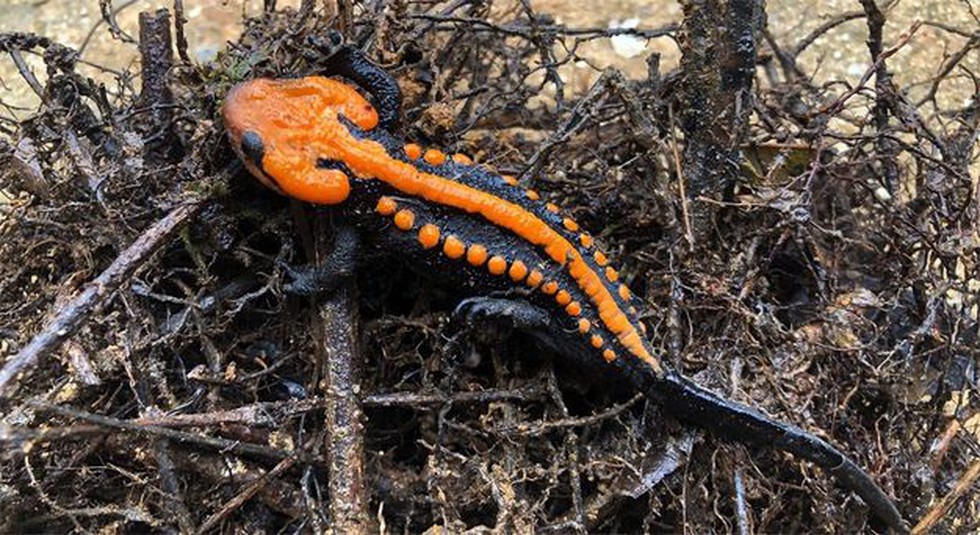About Cao Bang crocodile newt:
- Cao Bang crocodile newt, or Tylototriton Koliaensis, is a new species of crocodile newt.
- It was found in Vietnam's mountainous farm.
- It lives in a mountain forest at elevations of 3,300 feet or more where the weather fluctuates from a colder dry season to a warmer rainy season.
- Features:
- The Cao Bang crocodile newts are medium-sized and are about 5-inches in length.
- It has stout bodies with rough skin, and its scales are like knobs or warts.
- The heads of the crocodile are large, and their limbs are very long and thin.
- It is completely black in colour with a uniform hue of bright orange on marks of fingertips and toes.
- The bottom part of the crocodile has a dark gray stomach and an orange stripe down to the center of the tail.
- The newts breed during the rainy summer in the slow-flowing streams or temporary pools, and they hide under rocks and cavities during the winter.
What is a crocodile newt?
- It is a genus of salamanders found primarily in Asia.
- They are called "crocodile newts" because of their rough, textured skin that resembles the hide of a crocodile.
- Most species are dark brown or black with bright orange or red markings on their head, back, and tail.
- They often live near slow-moving streams, ponds, or marshes where they can lay eggs and find food.
- Species Examples: Tylototriton verrucosus (Himalayan crocodile newt), Tylototriton shanjing (Emperor newt), Tylototriton kweichowensis (Kweichow crocodile newt).
